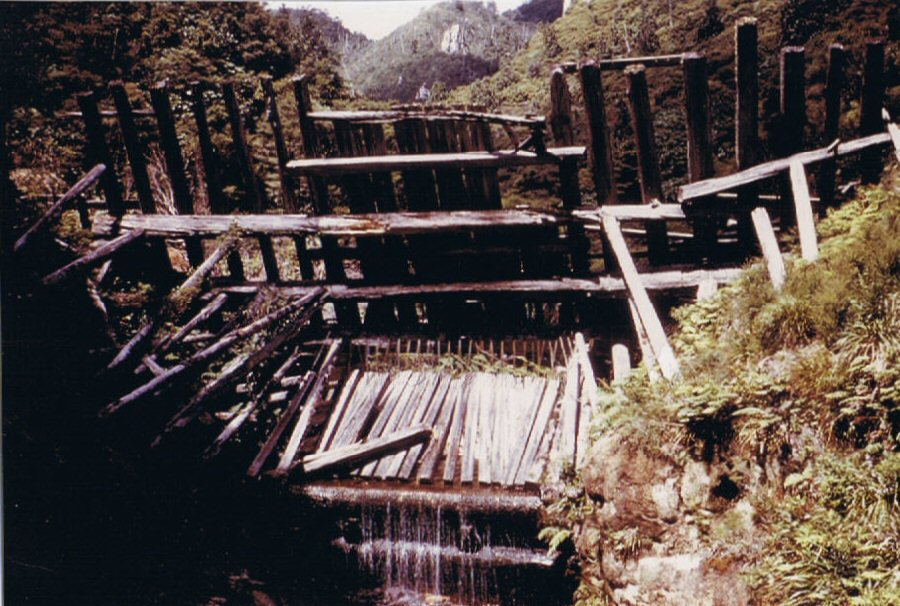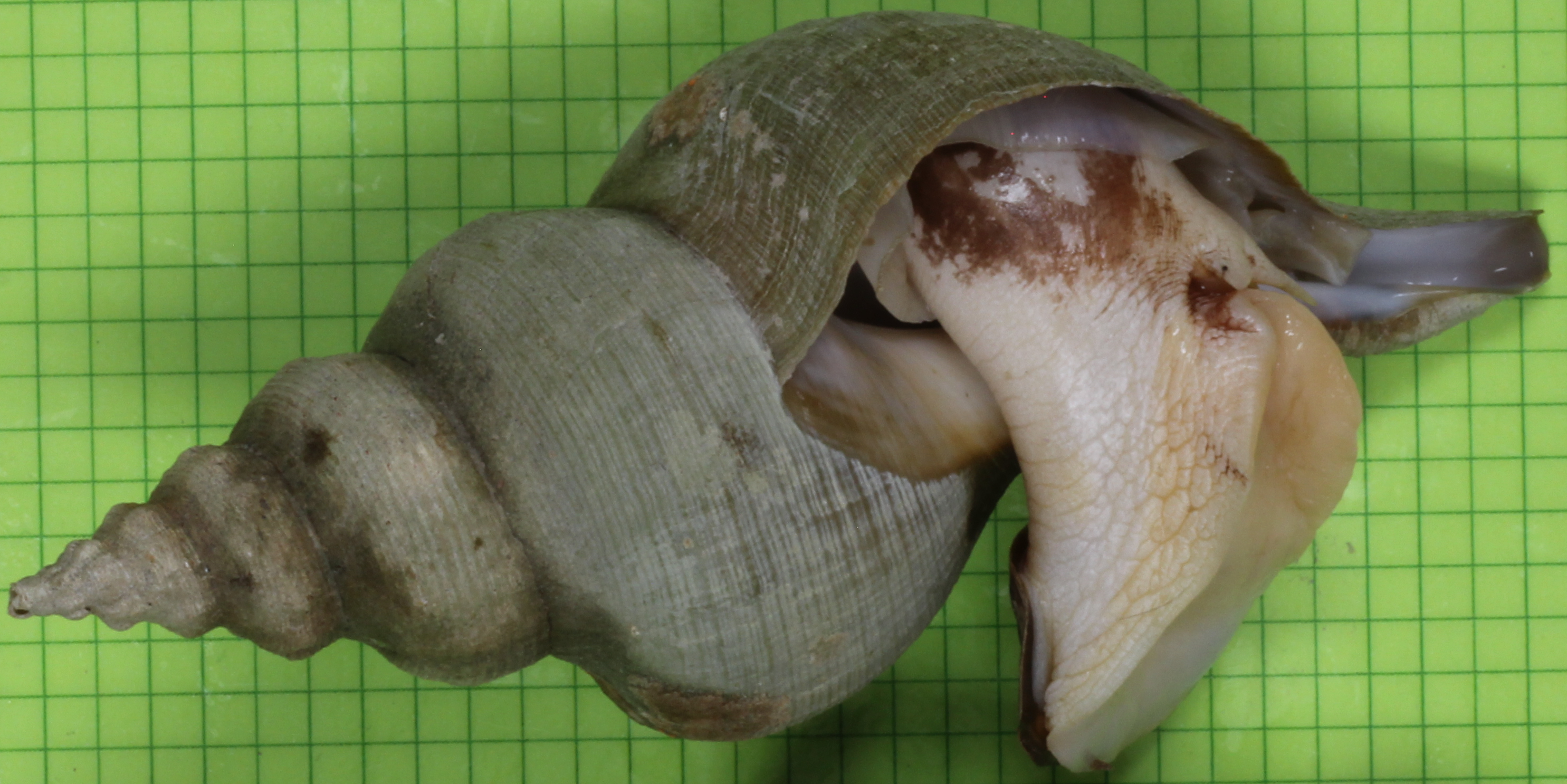|
Buccinulum Robustum
''Buccinulum robustum'' is a species of marine gastropod mollusc in the family Tudiclidae. It was first described by Baden Powell Baden-Powell () is a surname. Notable people with the surname include: Baden-Powell * The Rev. Prof. Baden Powell (mathematician) (1796–1860), mathematician, clergyman and liberal theologian. By his first marriage father of: :* Baden Henry Powell ... in 1929. It is endemic to the waters of New Zealand. Description ''Buccinulum robustum'' is typically between 13 and 15 mm in length, and can grow up to 20.6 mm by 9 mm. It is recognisable by its strong axial ribs. Specimens vary in colour from black and pink to uniformly white. Some specimens of ''Buccinulum robustum'' were originally described as two different species (''Buccinulum robustum'' and ''Buccinulum suteri''), with the name ''Buccinulum suteri'' given to specimens with finer spiral sculptures. ''Buccinulum suteri'' was later synonymised with ''Buccinulum robustum''. Distri ... [...More Info...] [...Related Items...] OR: [Wikipedia] [Google] [Baidu] |
Baden Powell (malacologist)
Arthur William Baden Powell (4 April 1901 – 1 July 1987) was a New Zealand malacologist, naturalist and palaeontologist, a major influence in the study and classification of New Zealand molluscs through much of the 20th century. He was known to his friends and family by his third name, "Baden". Biography Early life The name Baden had been a given name in a Powell family since 1731, when Susannah Powell née Thistlethwayte (1696–1762) gave to her child (1731–1792) the maiden name of her mother, Susannah Baden (1663–1692). The name Baden, particularly when associated with the surname Powell, became famous in 1900–1901, the year Arthur William Baden Powell was born, because of the siege of Mafeking, the most famous British action in the Second Boer War, which turned the British commander of the besieged, Robert Baden-Powell, into a national hero. Throughout the British Empire, babies were named after him. No family connection has yet been established between Arthur ... [...More Info...] [...Related Items...] OR: [Wikipedia] [Google] [Baidu] |
Great Barrier Island
Great Barrier Island ( mi, Aotea) lies in the outer Hauraki Gulf, New Zealand, north-east of central Auckland. With an area of it is the sixth-largest island of New Zealand and fourth-largest in the main chain. Its highest point, Mount Hobson, is above sea level.Great Barrier Island Aotea page on the DOC website (from the . Accessed 2008-06-04.) The is the |
Endemic Molluscs Of New Zealand
Endemism is the state of a species being found in a single defined geographic location, such as an island, state, nation, country or other defined zone; organisms that are indigenous to a place are not endemic to it if they are also found elsewhere. For example, the Cape sugarbird is found exclusively in southwestern South Africa and is therefore said to be ''endemic'' to that particular part of the world. An endemic species can be also be referred to as an ''endemism'' or in scientific literature as an ''endemite''. For example '' Cytisus aeolicus'' is an endemite of the Italian flora. ''Adzharia renschi'' was once believed to be an endemite of the Caucasus, but it was later discovered to be a non-indigenous species from South America belonging to a different genus. The extreme opposite of an endemic species is one with a cosmopolitan distribution, having a global or widespread range. A rare alternative term for a species that is endemic is "precinctive", which applies to s ... [...More Info...] [...Related Items...] OR: [Wikipedia] [Google] [Baidu] |
Gastropods Of New Zealand
The gastropods (), commonly known as snails and slugs, belong to a large taxonomic class of invertebrates within the phylum Mollusca called Gastropoda (). This class comprises snails and slugs from saltwater, from freshwater, and from land. There are many thousands of species of sea snails and slugs, as well as freshwater snails, freshwater limpets, and land snails and slugs. The class Gastropoda contains a vast total of named species, second only to the insects in overall number. The fossil history of this class goes back to the Late Cambrian. , 721 families of gastropods are known, of which 245 are extinct and appear only in the fossil record, while 476 are currently extant with or without a fossil record. Gastropoda (previously known as univalves and sometimes spelled "Gasteropoda") are a major part of the phylum Mollusca, and are the most highly diversified class in the phylum, with 65,000 to 80,000 living snail and slug species. The anatomy, behavior, feeding, ... [...More Info...] [...Related Items...] OR: [Wikipedia] [Google] [Baidu] |
Gastropods Described In 1929
The gastropods (), commonly known as snails and slugs, belong to a large taxonomic class of invertebrates within the phylum Mollusca called Gastropoda (). This class comprises snails and slugs from saltwater, from freshwater, and from land. There are many thousands of species of sea snails and slugs, as well as freshwater snails, freshwater limpets, and land snails and slugs. The class Gastropoda contains a vast total of named species, second only to the insects in overall number. The fossil history of this class goes back to the Late Cambrian. , 721 families of gastropods are known, of which 245 are extinct and appear only in the fossil record, while 476 are currently extant with or without a fossil record. Gastropoda (previously known as univalves and sometimes spelled "Gasteropoda") are a major part of the phylum Mollusca, and are the most highly diversified class in the phylum, with 65,000 to 80,000 living snail and slug species. The anatomy, behavior, feeding, and reproduct ... [...More Info...] [...Related Items...] OR: [Wikipedia] [Google] [Baidu] |
Buccinidae
The Buccinidae are a very large and diverse taxonomic family of large sea snails, often known as whelks or true whelks.Bouchet, P.; Gofas, S. (2010). Buccinidae. In: Bouchet, P.; Gofas, S.; Rosenberg, G. (2010) World Marine Mollusca database. Accessed through: World Register of Marine Species at http://www.marinespecies.org/aphia.php?p=taxdetails&id=149 on 2010-12-30 The family includes more than 1500 species. Taxonomy The family Busyconidae was for a time treated as a subfamily of Buccinidae called Busyconinae. Genera ''Antillophos'', '' Engoniophos'', '' Phos'', ''Nassaria'', '' Tomlinia'', '' Anentome'' and '' ''Clea'''' were treated within family Buccinidae, but they were moved to Nassariidae in 2016. Habitat The true whelks occur worldwide in all seas from tropical oceans to the cold seas of the Arctic Ocean and the Southern Ocean. They are found from the intertidal to the bathypelagic zones. Most prefer a solid bottom, but some inhabit sandy substrates. Descri ... [...More Info...] [...Related Items...] OR: [Wikipedia] [Google] [Baidu] |
Aupouri Peninsula
The Aupouri Peninsula is a tombolo at the northern tip of the North Island of New Zealand. It projects between the Tasman Sea to the west and the Pacific Ocean to the east. It constitutes the northern part of the Far North District, incorporating North Cape, Houhora and the northern half of Awanui. History The peninsula was an important location for the kauri gum digging trade, which peaked between 1890 and 1935. High quality kauri gum was found around the Parengarenga Harbour in the north, which led to the development of the Parenga Gumfield Company. After 1910, gum digging intensified in the southern half of the peninsula, as the poorer grade gum found in this region greatly increased in value. Overview It is a peninsula on a peninsula, being part of the massive North Auckland Peninsula which makes up nearly one twelfth of New Zealand's land area. Close to the northern town of Kaitaia, the North Auckland Peninsula suddenly narrows from a width of 60 kilometres to ... [...More Info...] [...Related Items...] OR: [Wikipedia] [Google] [Baidu] |
Port Fitzroy
Port Fitzroy is a harbour and coastal community on Great Barrier Island in New Zealand's Hauraki Gulf. It is the largest natural harbour in the Gulf, with Kaikoura Island guarding the entrance to the harbour and providing shelter for yachties in almost all weather conditions. Port Fitzroy is a stop for boats to pick up fuel, water and supplies. The harbour is particularly busy with Auckland boaties during the Christmas and summer period. The settlement has only two basic service businesses, focused on servicing boaties. The Port FitzRoy Store is one of only four grocery stores on Great Barrier Island. Port FitzRoy Fuel sells both vehicle and boat fuel, but is one of the most expensive petrol stations in the country due to its remote location. In 2019, Auckland Council introduced a waste drop-off service over summer to discourage boaties from dumping waste. There are aquaculture farms in the sheltered waters and an annual Musselfest event. The Warren's and Bridle Tracks, mana ... [...More Info...] [...Related Items...] OR: [Wikipedia] [Google] [Baidu] |
Species
In biology, a species is the basic unit of Taxonomy (biology), classification and a taxonomic rank of an organism, as well as a unit of biodiversity. A species is often defined as the largest group of organisms in which any two individuals of the appropriate sexes or mating types can reproduction, produce Fertility, fertile offspring, typically by sexual reproduction. Other ways of defining species include their karyotype, DNA sequence, morphology (biology), morphology, behaviour or ecological niche. In addition, paleontologists use the concept of the chronospecies since fossil reproduction cannot be examined. The most recent rigorous estimate for the total number of species of eukaryotes is between 8 and 8.7 million. However, only about 14% of these had been described by 2011. All species (except viruses) are given a binomial nomenclature, two-part name, a "binomial". The first part of a binomial is the genus to which the species belongs. The second part is called the specifi ... [...More Info...] [...Related Items...] OR: [Wikipedia] [Google] [Baidu] |
New Zealand
New Zealand ( mi, Aotearoa ) is an island country in the southwestern Pacific Ocean. It consists of two main landmasses—the North Island () and the South Island ()—and over 700 List of islands of New Zealand, smaller islands. It is the List of island countries, sixth-largest island country by area, covering . New Zealand is about east of Australia across the Tasman Sea and south of the islands of New Caledonia, Fiji, and Tonga. The country's varied topography and sharp mountain peaks, including the Southern Alps, owe much to tectonic uplift and volcanic eruptions. New Zealand's Capital of New Zealand, capital city is Wellington, and its most populous city is Auckland. The islands of New Zealand were the last large habitable land to be settled by humans. Between about 1280 and 1350, Polynesians began to settle in the islands and then developed a distinctive Māori culture. In 1642, the Dutch explorer Abel Tasman became the first European to sight and record New Zealand. ... [...More Info...] [...Related Items...] OR: [Wikipedia] [Google] [Baidu] |
Endemism
Endemism is the state of a species being found in a single defined geographic location, such as an island, state, nation, country or other defined zone; organisms that are indigenous to a place are not endemic to it if they are also found elsewhere. For example, the Cape sugarbird is found exclusively in southwestern South Africa and is therefore said to be ''endemic'' to that particular part of the world. An endemic species can be also be referred to as an ''endemism'' or in scientific literature as an ''endemite''. For example ''Cytisus aeolicus'' is an endemite of the Italian flora. ''Adzharia renschi'' was once believed to be an endemite of the Caucasus, but it was later discovered to be a non-indigenous species from South America belonging to a different genus. The extreme opposite of an endemic species is one with a cosmopolitan distribution, having a global or widespread range. A rare alternative term for a species that is endemic is "precinctive", which applies t ... [...More Info...] [...Related Items...] OR: [Wikipedia] [Google] [Baidu] |

.jpg)



